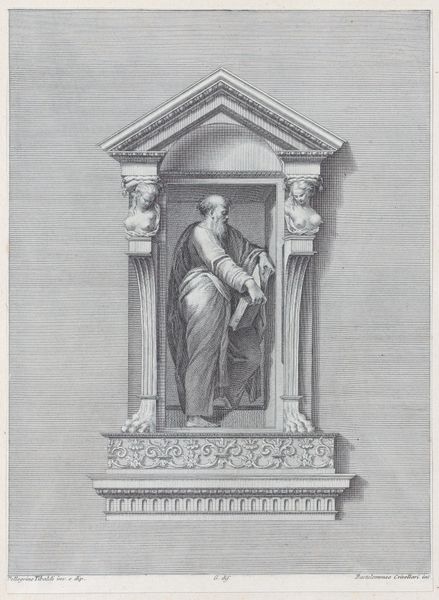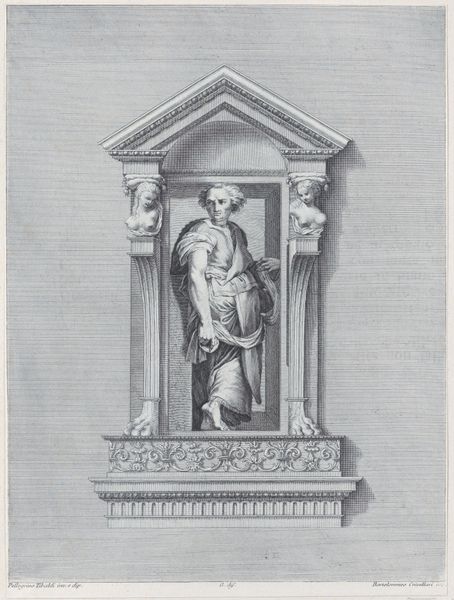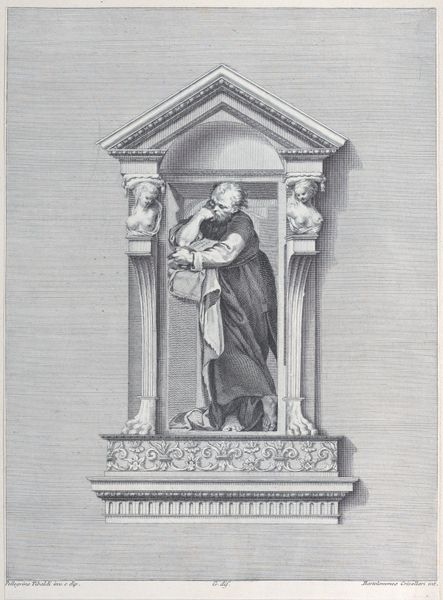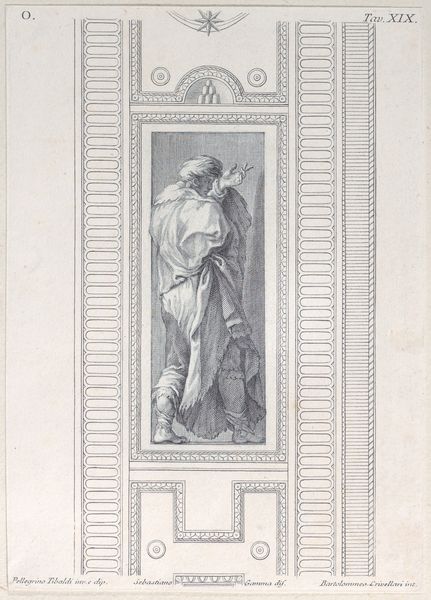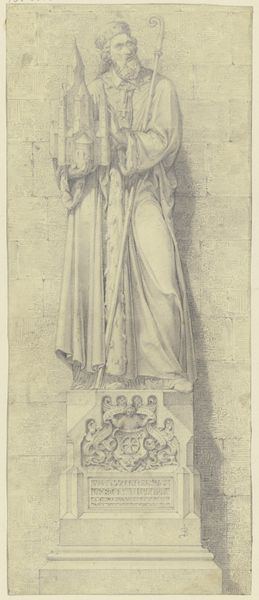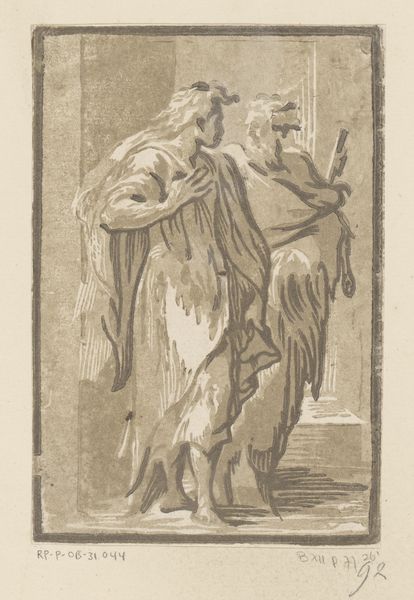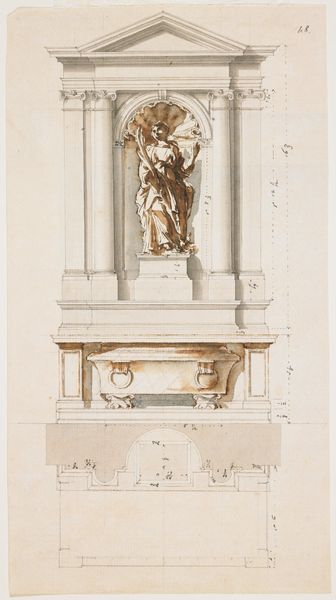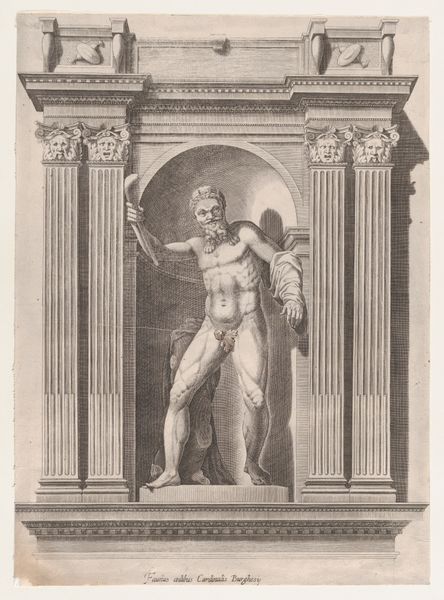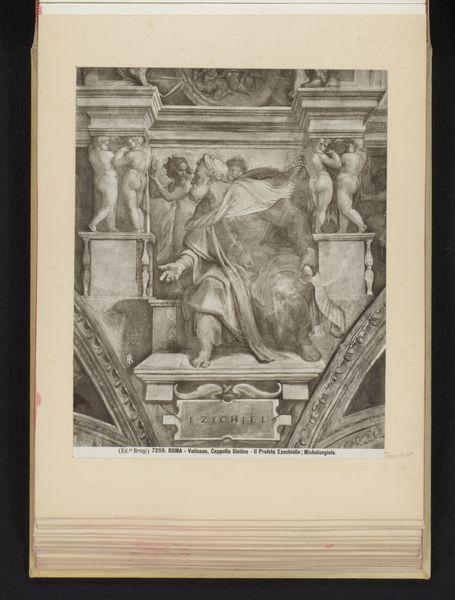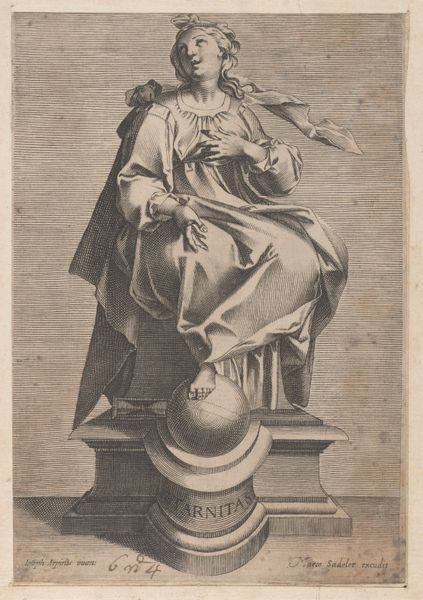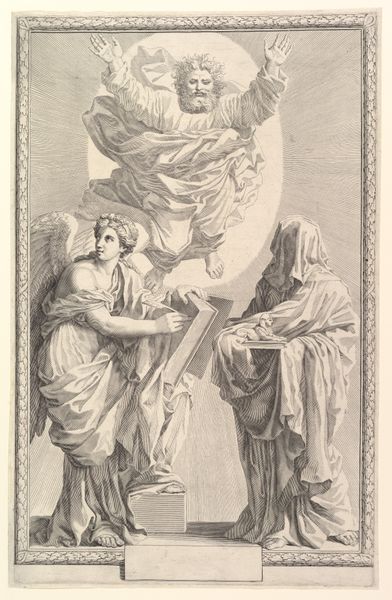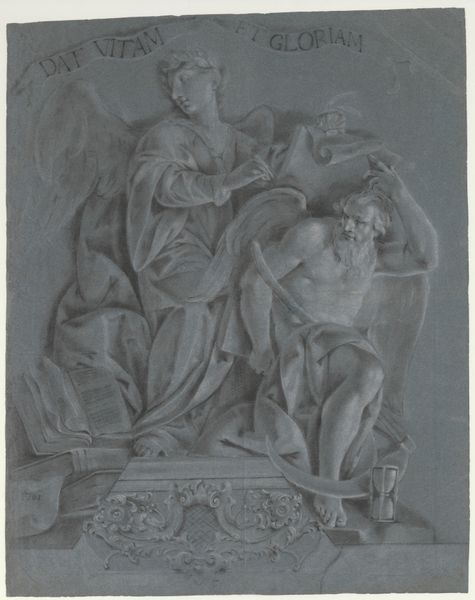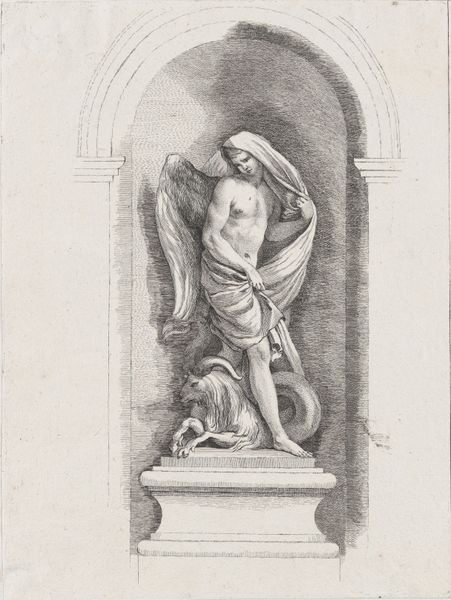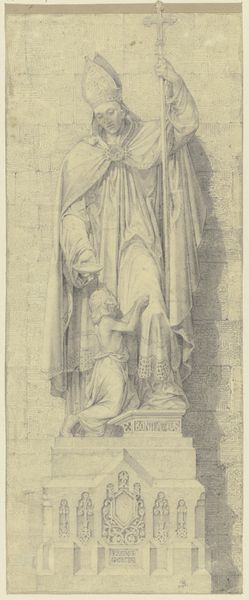
A standing man in a niche reaching forward with one arm 1756
0:00
0:00
drawing, print, engraving
#
pencil drawn
#
drawing
#
baroque
# print
#
classical-realism
#
figuration
#
line
#
history-painting
#
italian-renaissance
#
engraving
Dimensions: Sheet (Trimmed): 11 1/4 × 8 3/16 in. (28.6 × 20.8 cm)
Copyright: Public Domain
Editor: We’re looking at Bartolomeo Crivellari's "A standing man in a niche reaching forward with one arm," created in 1756. It's a print, an engraving. The figure seems both imposing and fragile somehow, trapped within that architectural framework. What strikes you about its composition? Curator: The piece, ostensibly a representational image, truly distinguishes itself in the geometric interplay of its forms. The figure itself, while classically rendered, exists primarily as a series of carefully constructed lines, each delineating shape and shadow. Editor: Lines as shape... Curator: Observe the niche. Note the relationship between its rectilinear structure and the organic curve of the figure's body and beard. How do those contrasts influence our reading of the image? The Doric order of engaged columns at either side: consider what effect it may have on our interpretation. The entire composition is based on principles of balance and restraint, consistent with interpretations of classical ideals that dominated that period of the 18th Century. Editor: I guess it feels so deliberate and formal, even the shading looks carefully placed. Curator: Precisely. Every line, every area of tone, has been meticulously calculated to produce a sense of harmony and order. It's less about conveying raw emotion, more about a rational presentation. The niche constrains the figure within strict confines and planes. Consider also the overall flatness, and how that contributes to its overall effect. What do you make of the figure's gesture? Editor: His outstretched arm is a break in that stillness, reaching out. That makes it feel more like a drawing of sculpture. The use of engraving does create a sense of depth using only marks. Curator: You're right to emphasize the tactile illusion. It prompts reflection on the function of mark-making. The work invites sustained observation of its formal organization and method, independent of representational concern. Editor: This approach really opened my eyes to details I initially missed and appreciate now. Curator: And for me as well. The close look with a different perspective adds a valuable lens to see its artistry anew.
Comments
No comments
Be the first to comment and join the conversation on the ultimate creative platform.
